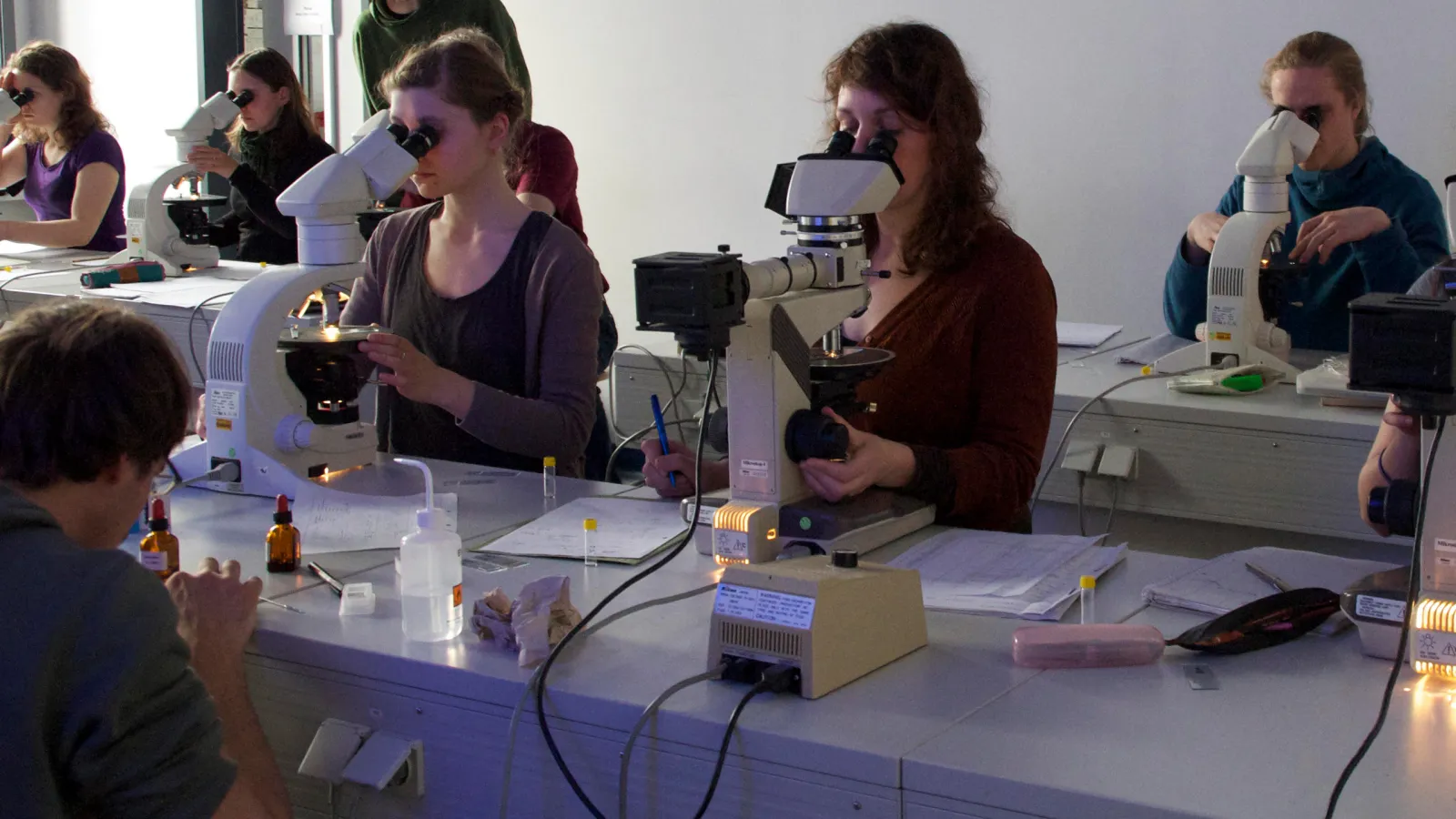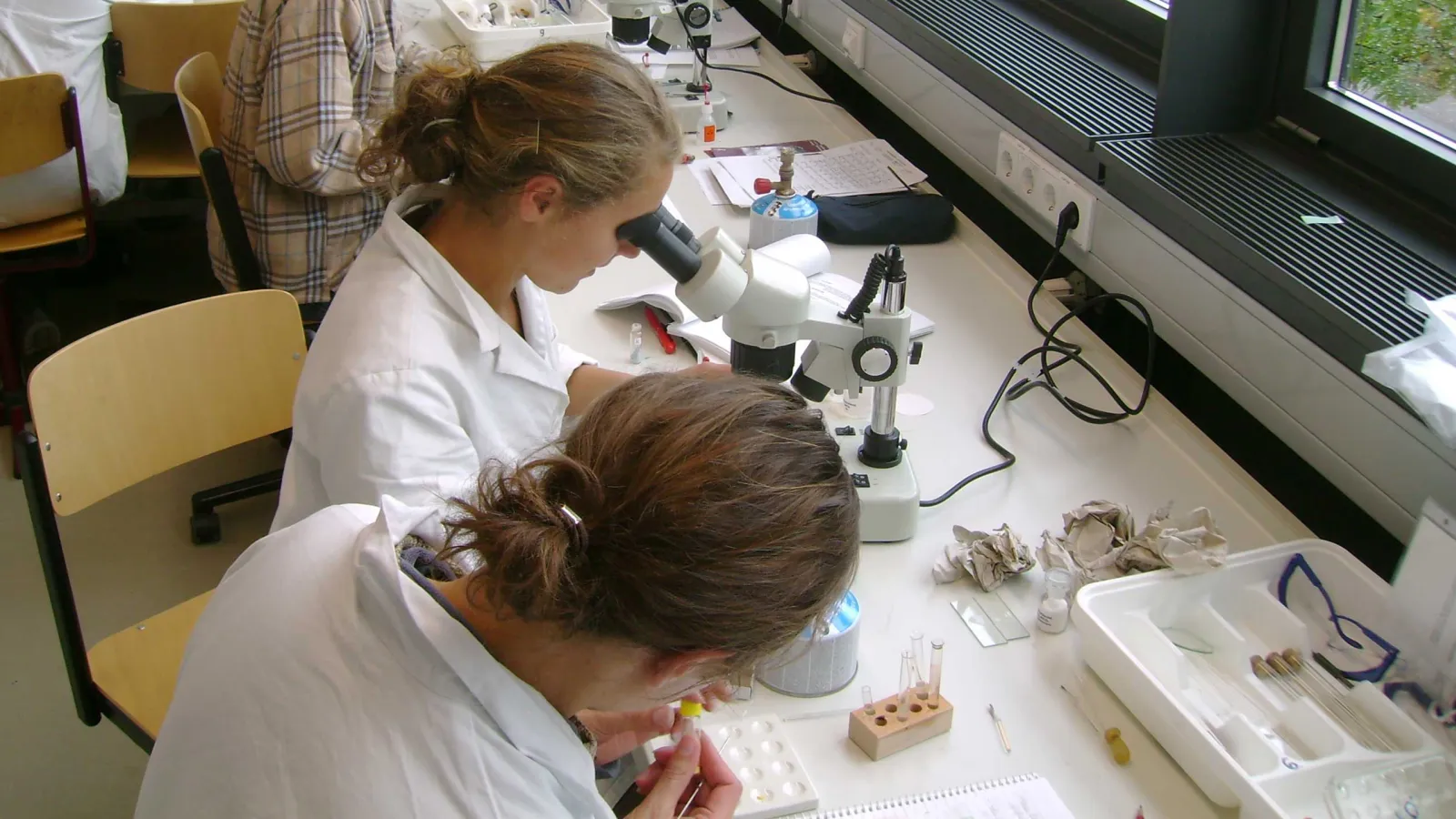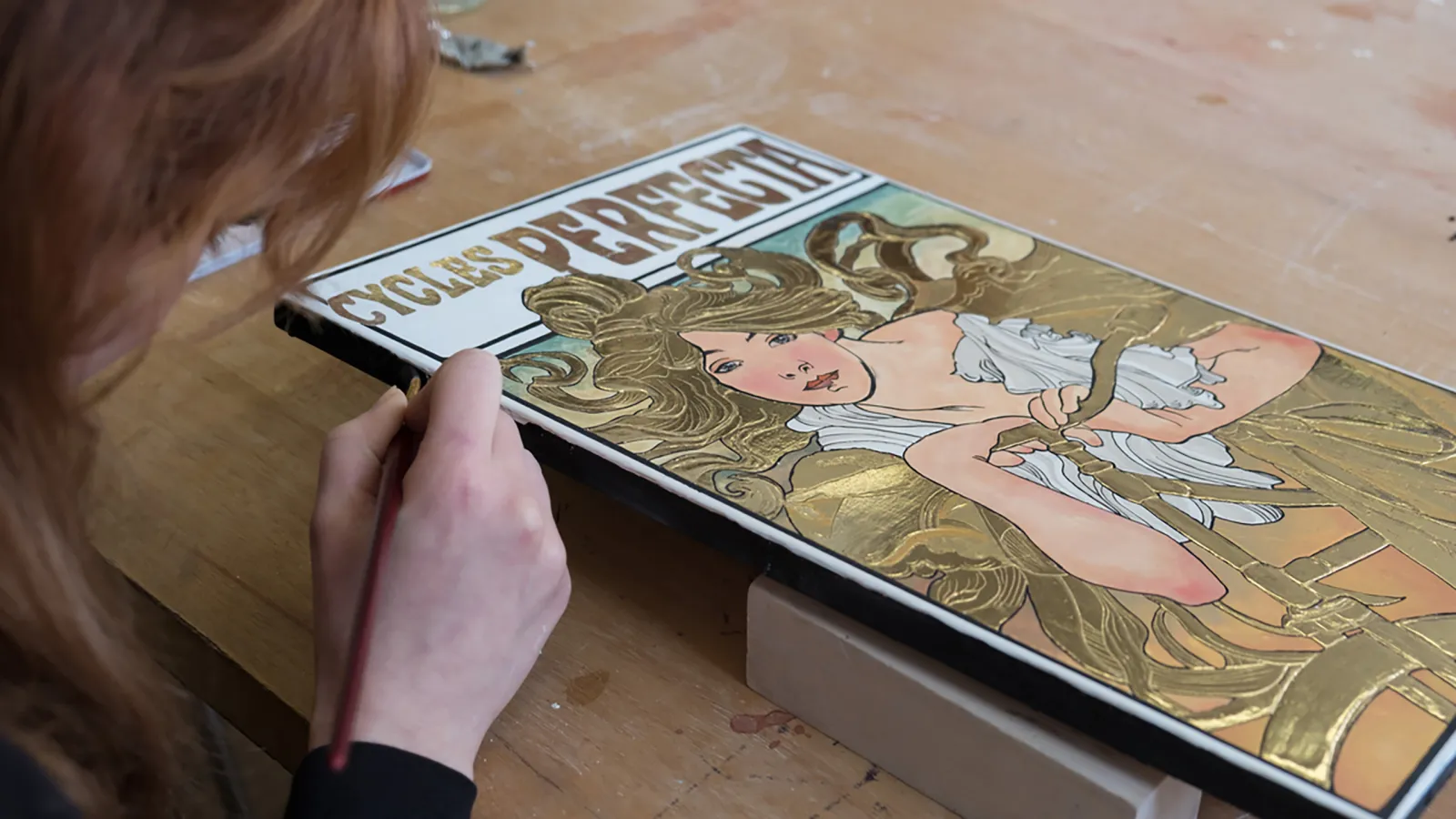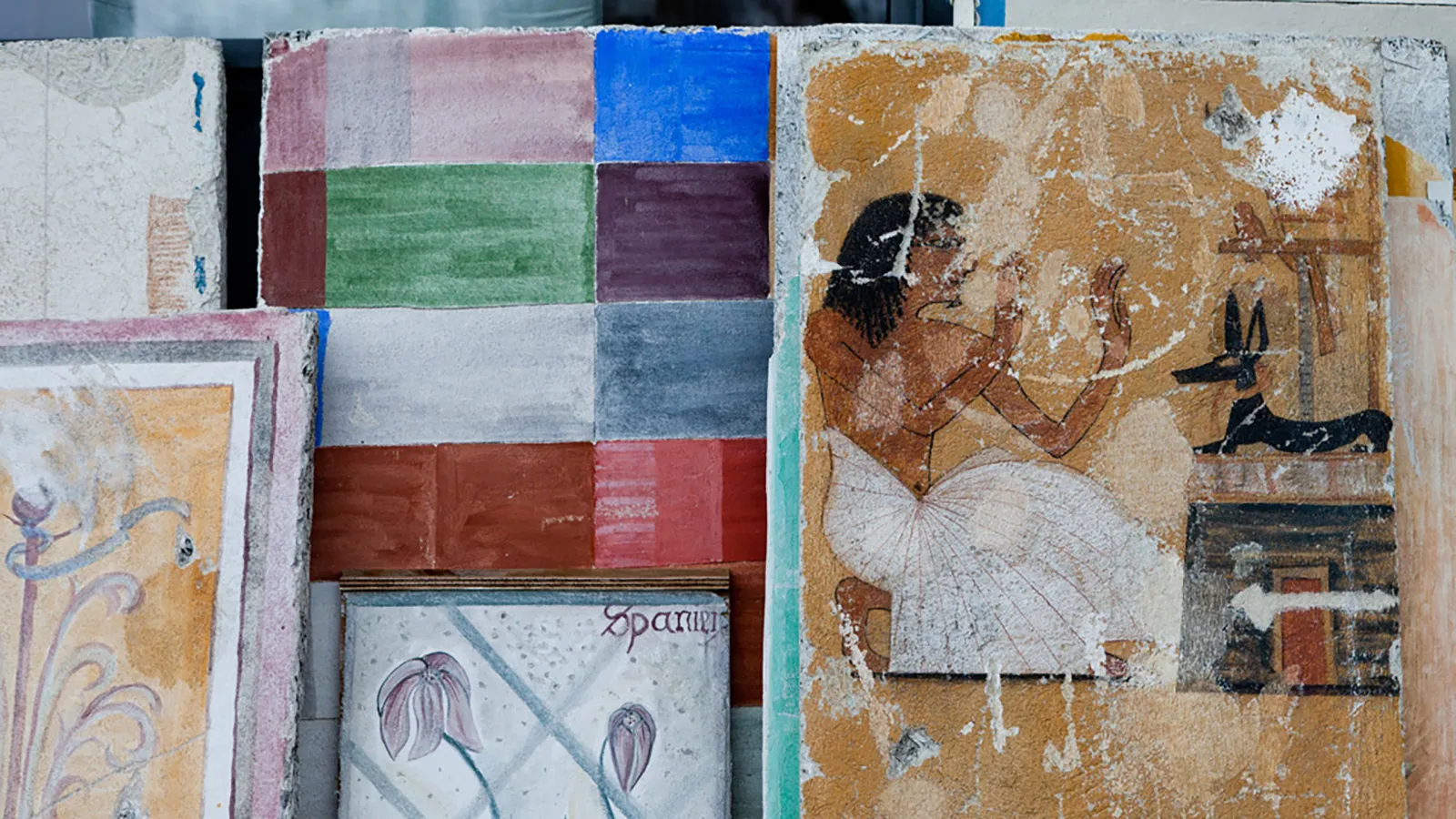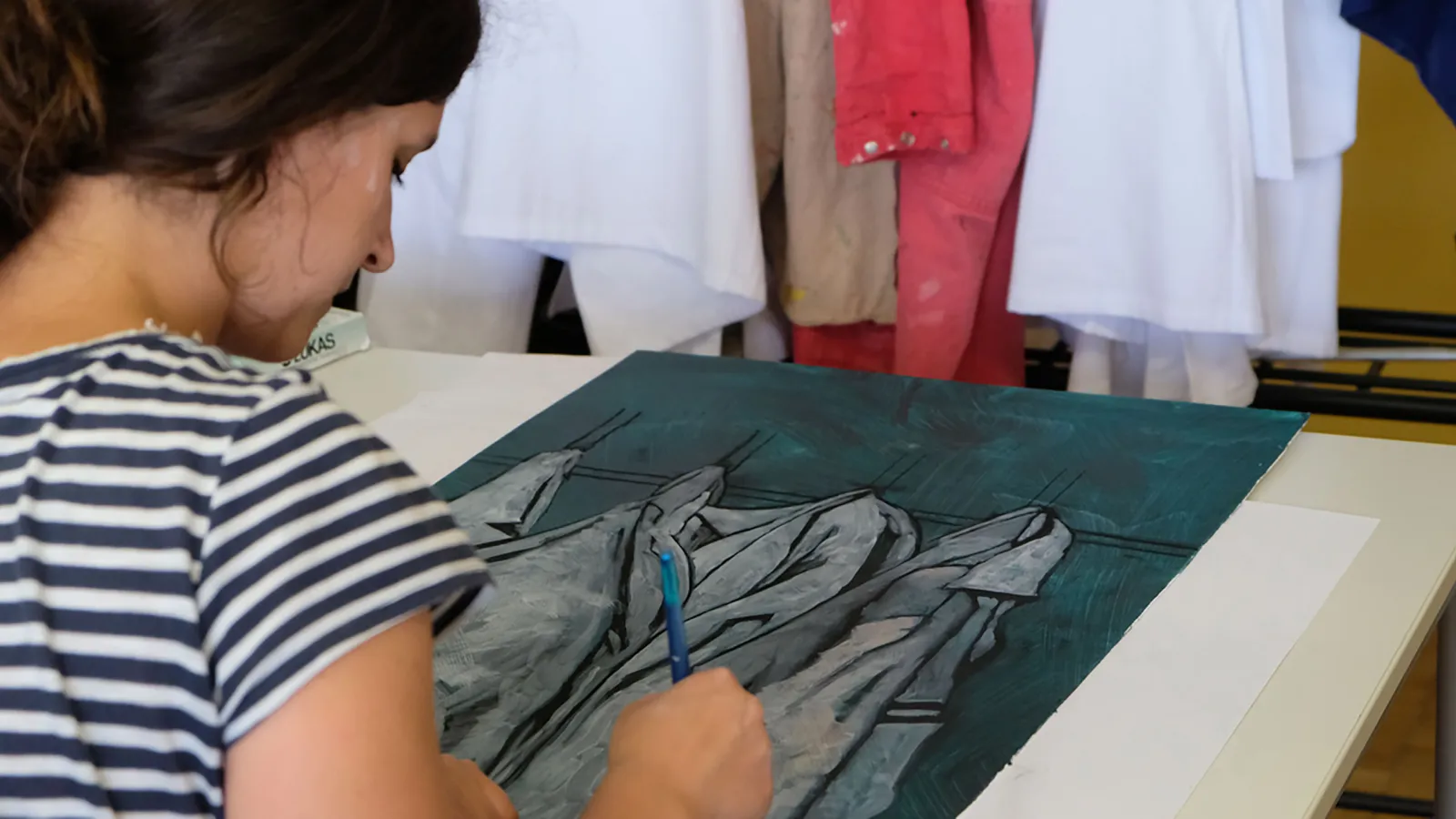Interdisciplinary Subjects
The degree programme is composed of the subjects of conservation and restoration sciences, humanities and natural sciences as well as artistic design and applied historical or conservation-restoration working techniques.
Natural Sciences & Design
Natural Sciences
Natural science disciplines such as chemistry, physics or geosciences have become an indispensable partner for the conservation and restoration of art and cultural heritage in recent decades. For this reason, the early integration of the natural sciences into the training of conservators is imperative.
The subject area of natural sciences in restoration imparts basic scientific knowledge with regard to conservation and restoration technologies. In addition, it supports and accompanies the subjects from the field of conservation and restoration in the various fields of study.
The teaching content is imparted in lectures and practical courses with coordinated content. Knowledge to be imparted in addition To understand works of art in their material composition, properties and their ageing reactions, to recognise changes, causes and damage and to independently develop suitable conservation concepts. This is accompanied by the ability to work interdisciplinarily with the natural science disciplines as a further educational goal.
The natural sciences in conservation department has modern laboratory buildings that offer ideal conditions for teaching and research.
In addition to its own laboratories on the campus of the University of Applied Sciences, further laboratories with high-quality equipment are available for training and research as a result of cooperation with the natural science laboratories of the Prussian Palaces and Gardens Foundation, the Brandenburg State Office for the Preservation of Historical Monuments and the Archaeological Museum in Wünsdorf, the Institute for Earth and Environmental Sciences at the University in Potsdam and the Rathgen Research Laboratory in Berlin.
Contact: Prof. Dr. Steffen Laue, Christine Fuchs
Design Basics
Fundamentals of Design are seminars with exercises to acquire aesthetic and conceptual knowledge, which should lead to visual and haptic sensitisation, formal understanding, craftsmanship and an understanding of design processes.
In the first semesters, the programme includes courses in drawing, painting and sculpture; optional subjects include fresco painting and imitation techniques (stucco marble and wood imitation painting).
Drawing exercises serve to train judgement and powers of observation, i. e. the ability to receive. The subject of the drawer is not the things themselves, not their projection onto the surface, but his or her relationship to them. The working process corresponds with the sensitivity and the tense energy of this relationship in order to convey something of what we experience as real. Nevertheless: instead of what we observe, we draw what we know. To escape this requires the utmost attention and dedication. The traces on the paper are the results of a state of mind, not only of technical work.
Participation in pictorial thought processes makes us clairvoyant, sets us in vibration. Thus, also here, in the seminar "Colour", the result tells more than about the relationship to supposedly controllable facts of the polychrome designs.
In particular, the insights gained from drawing are used for ideas for sculptural realisation, for planning and execution, both of free-standing sculptures (i.e. of space per se) and for an aesthetics that examines objects related to architecture and understood in the context of space.
The focus of all these exercises is to acquire the possibilities and laws of artistic design, not to create authentic works of art. Last but not least, the creative work opens up neuronal connections that increase the enjoyment and intensity for study, work and other areas of life. These insights are deepened and constantly enriched.
By offering template narratives, which flow into the arts and crafts task fields such as stucco marble design, historical imitation wood painting and fresco wall designs, a connection is created that holds the aesthetic foundations together in a comprehensible way.
Contact: Ioannis Savvidis
